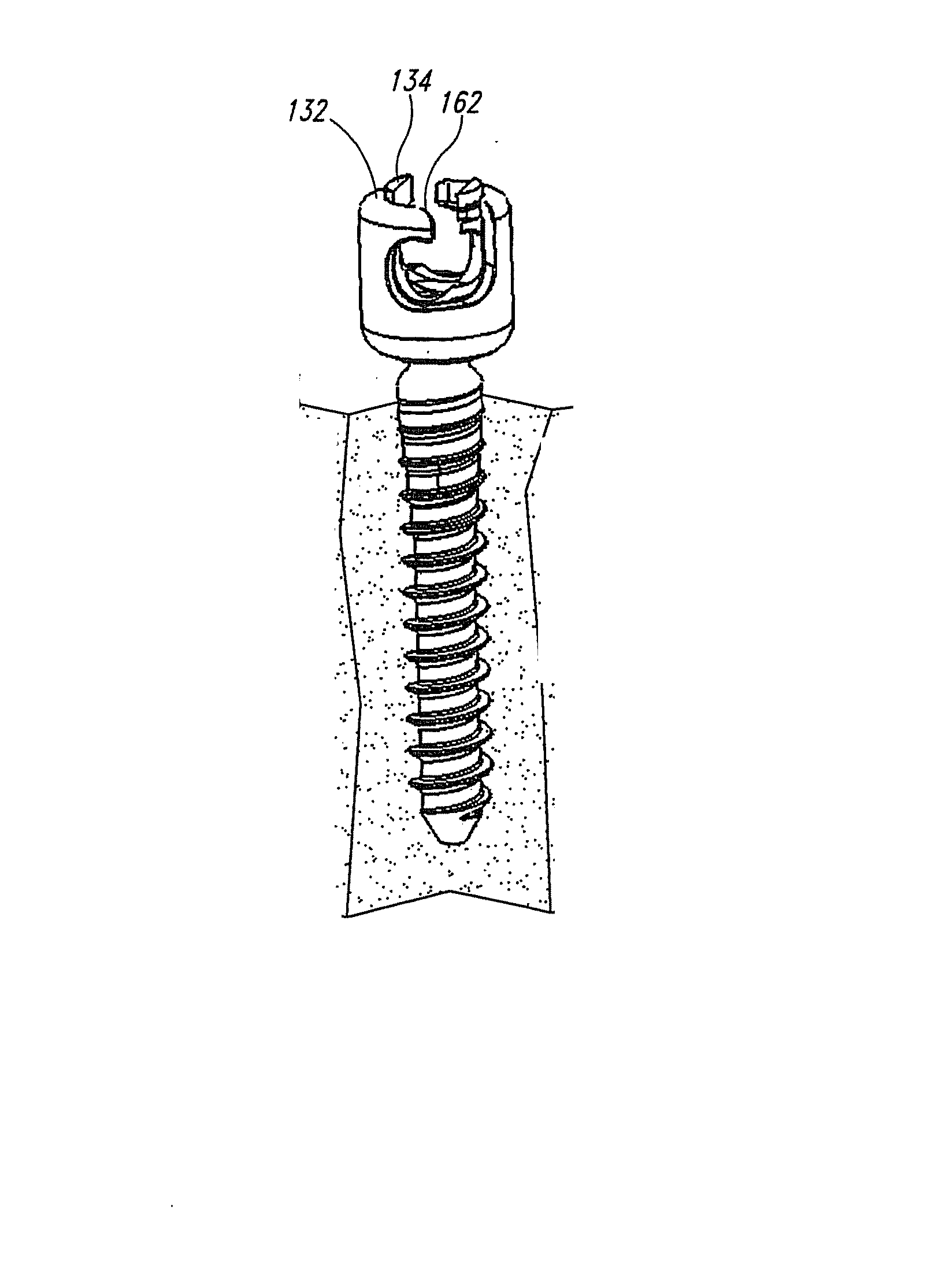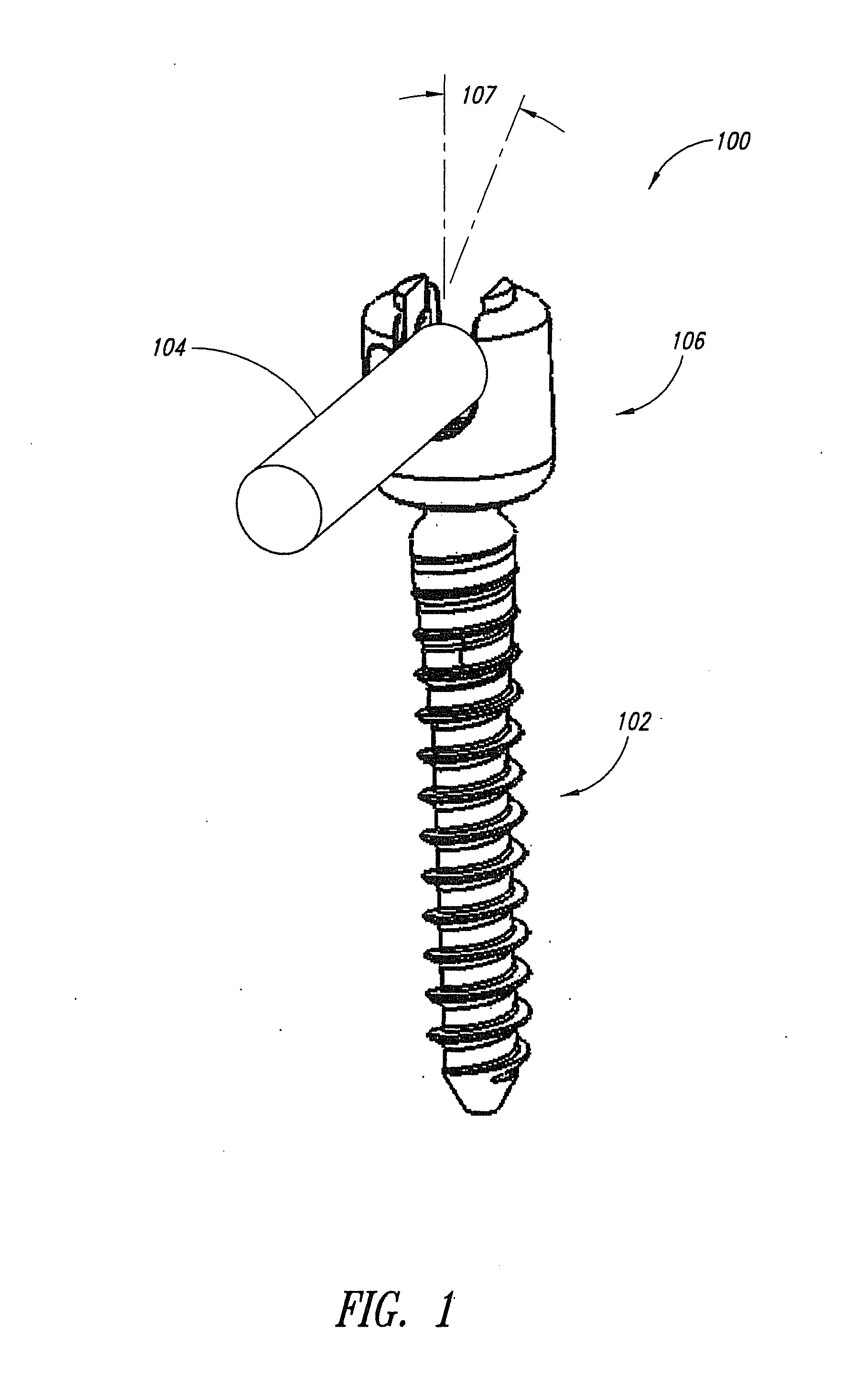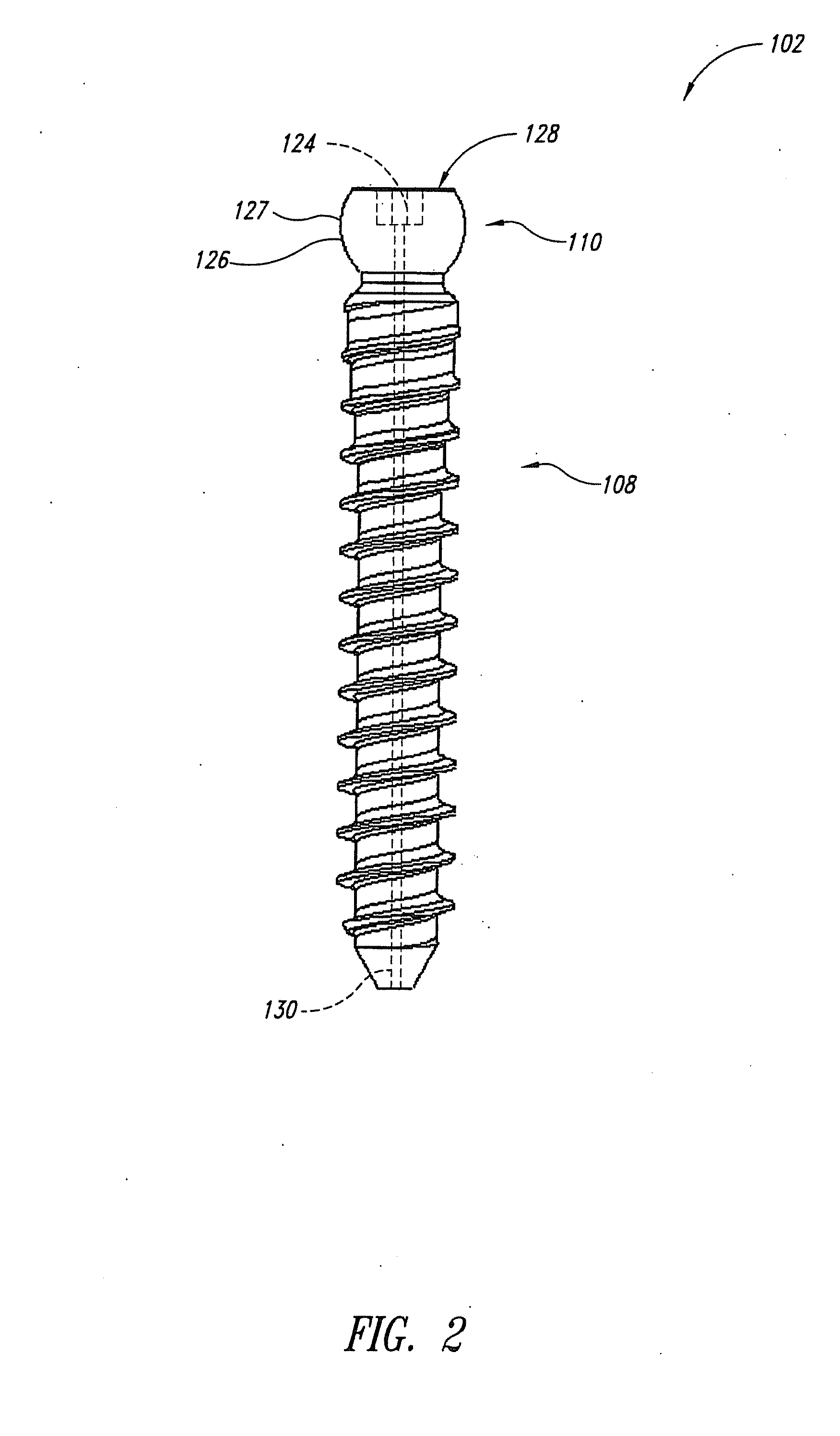Pedicle Screw Systems and Methods of Assembling/Installing the Same
a technology of pedicle screw and screw body, which is applied in the field of pedicle screw assembly, can solve the problems of less lack of features that enhance and/or benefit newer techniques, and more tissue damage in and around the surgical si
- Summary
- Abstract
- Description
- Claims
- Application Information
AI Technical Summary
Benefits of technology
Problems solved by technology
Method used
Image
Examples
Embodiment Construction
[0032] By way of example, pedicle screw systems may be fixed in the spine in a posterior lumbar fusion process via minimally invasive surgery (MIS) techniques. The systems are inserted into the pedicles of the spine and then interconnected with rods to manipulate (e.g., correct the curvature, compress or expand, and / or structurally reinforce) at least portions of the spine. Using the MIS approach to spinal fixation and / or correction surgery has been shown to decrease a patient's recovery time and reduce the risks of follow-up surgeries.
[0033] The ability to efficiently perform spinal fixation and / or correction surgeries using MIS techniques is enhanced by the use of pedicle screw systems provided in accordance with the present invention, which systems provide many advantages over conventional systems. For example, a pedicle screw system in accordance with one embodiment provides the advantage that the pedicle screw may be inserted into the bone without being pre-operatively coupled...
PUM
| Property | Measurement | Unit |
|---|---|---|
| rotation | aaaaa | aaaaa |
| diameter | aaaaa | aaaaa |
| recovery time | aaaaa | aaaaa |
Abstract
Description
Claims
Application Information
 Login to View More
Login to View More - R&D
- Intellectual Property
- Life Sciences
- Materials
- Tech Scout
- Unparalleled Data Quality
- Higher Quality Content
- 60% Fewer Hallucinations
Browse by: Latest US Patents, China's latest patents, Technical Efficacy Thesaurus, Application Domain, Technology Topic, Popular Technical Reports.
© 2025 PatSnap. All rights reserved.Legal|Privacy policy|Modern Slavery Act Transparency Statement|Sitemap|About US| Contact US: help@patsnap.com



